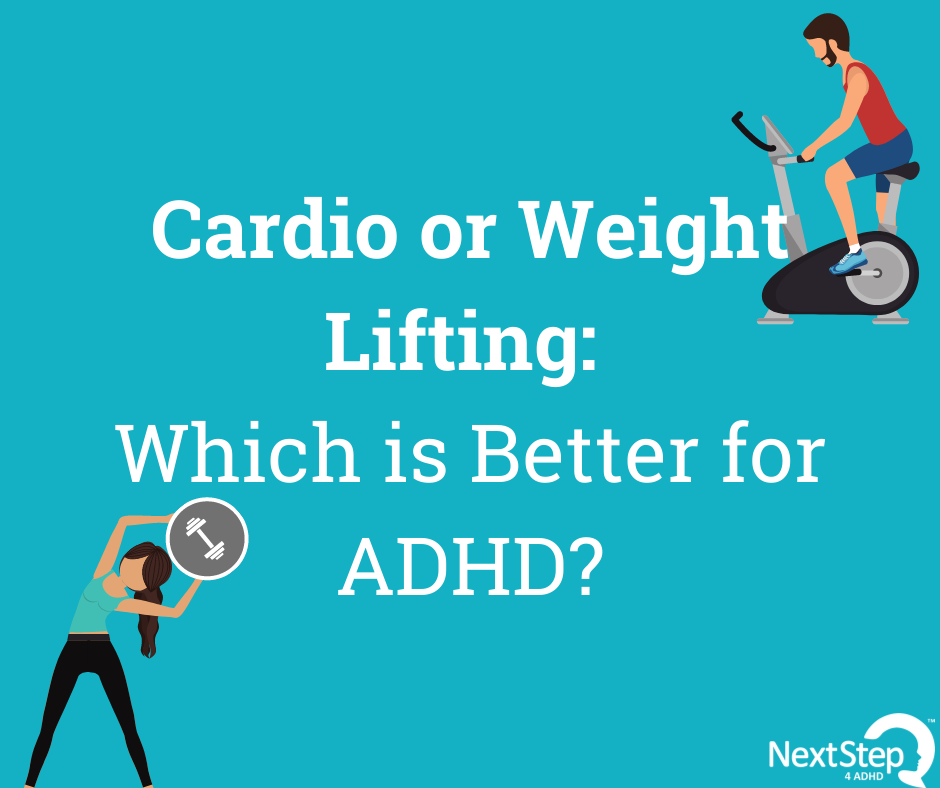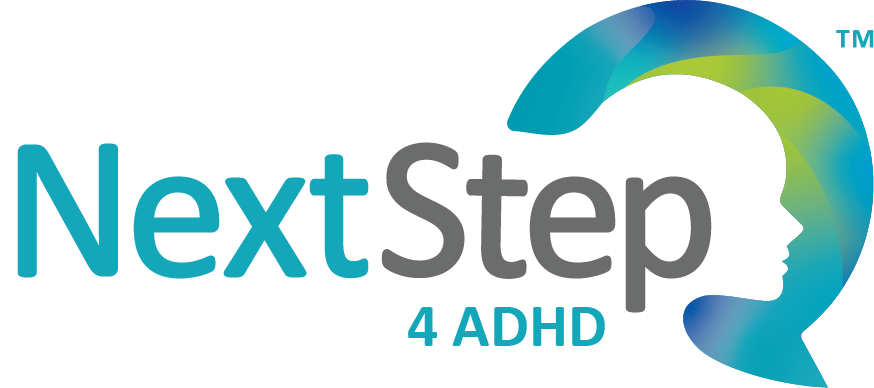
Cardio or Strength Training: Which Is Better Exercise for ADHD?
It’s a given: exercise is essential for a healthy body and a healthy mind. Exercise can lift your mood, help you sleep better at night, and reduce your chances of developing certain diseases — the benefits of exercise are endless. But did you know that exercise can (sometimes dramatically) reduce the troublesome symptoms of ADHD?
In fact, exercise is one of the three main pillars of self-care. Whether you’re into jogging or Peloton biking or hiking in the mountains, exercise is an important component of a holistic ADHD treatment plan. But when it comes to exercise and ADHD, which type of exercise is better?
Let’s dive in.
Aerobic Exercise for ADHD
First, what is aerobic exercise? Aerobic exercise — which means exercise “with oxygen” — is cardiovascular conditioning. You probably call this type of exercise “cardio,” and it can include activities like dancing, walking, swimming, jogging, or biking. One of the key differences here is that your breathing and heart rate will increase during these activities.
Is cardio good for managing ADHD symptoms?
Dr. John Ratey, a neuropsychiatrist from Harvard Medical School, says YES!
In an article published by the Attention Deficit Disorder Association, Dr. Ratey explains, “The best types of exercise encourage the development of connections between parts of the brain and in addition, stimulate the brain to release neurotransmitters (brain chemicals that improve the symptoms of ADHD).”
Finding the Right Cardio
The ideal activity to help manage the symptoms of ADHD:
- Is aerobic
- Requires you to remain alert
- Requires you to make quick changes (such as tracking the racquetball and pivoting quickly to return the ball)
- Involves cooperation and interaction with others
- Is connected to a personal meaning for you
- Is fun
You may find that many activities fit these requirements. A few examples include dancing, Zumba classes, soccer, tennis and racquetball, running (especially with a running group), walking, HIIT and Tabata, and jump rope. Martial arts — including ju jit su, karate, and tae kwon do — are also a good aerobic exercise for individuals diagnosed with ADHD. These sports have been shown to increase focus during homework, enhance academic performance, and decrease misbehavior in children diagnosed with ADHD. [1]
Dance is another activity that hits the above-mentioned requirements. It’s aerobic, it’s fun, it requires quick changes, and if you involve your family, it can give you the opportunity to develop a personal meaning with the activity. And the best part? You don’t even need to leave your home. You can find a dance-themed workout easily on YouTube. Interested? Grab your gym shoes and get groovin’!
Why Is Cardio Good for People with ADHD?
During an aerobic activity, your body requires more oxygen, which means your heart is pumping more blood to the brain. And more blood = more oxygen. More oxygen means that your brain cells are better-nourished, which can supercharge focus, the ability to learn, memory, and even emotional regulation, for 2 to 3 hours afterwards.
Specifically, scientists have linked vigorous, high-intensity workouts with more active brain cells. What does this have to do with ADHD? When the brain cells become more active, there is a surge in the production of a protein called brain-derived neurotrophic factor (BDNF). What?!
If you’ve never heard of BDNF, that’s okay! But this is the takeaway:
- Exercise encourages your brain to produce a protein called BDNF.
- BDNF is “associated with cognitive improvement and the alleviation of depression and anxiety,” according to a 2016 study published in eLife.
And here’s the important part: cardio workouts give the biggest boost to BDNF production.
Cardio helps in other ways too. Dr. Gimpel, a board-certified psychiatrist and neurologist and head of the Brain Power Clinic in Jerusalem also shares in the importance of cardio:
“Exercise alone increases levels of dopamine, which could improve concentration for hours after completion. But combine that exercise with a deep mental focus and patients may see even more positive results. I have businessmen that do not hold meetings unless they’re between 9 and 11 in the morning,” says Dr. Gimpel. “They go to the fitness center in the morning and create those perfect two hours of concentration without medication.”
So, the score:
- Cardio: 1
- Strength training: 0
Strength Training Exercise for ADHD
What is strength training? Strength training refers to exercises that build your endurance and strength. It includes lifting weights, but you’re not limited to using weights. You can use your own bodyweight to perform strength training exercised. This includes sit-ups, push-ups, pull-ups, etc.
Is strength training good for people with ADHD? YES!
Strength training can also help reduce the symptoms of several mental health conditions, including depression, anxiety, and ADHD. How? Exercise-triggered endorphins — the “happy” hormones — get a lot of credit, but strength training does more. It also provides you with an opportunity to overcome obstacles (like reaching new rep goals or smashing your push-up record) in a controlled manner. Overcoming controlled obstacles has a direct (and positive) impact on your mental resiliency, according to research from Harvard Medical School.
You don’t need to become a bodybuilder though. For the greatest effects on mental well-being, a 2014 review published in the journal Frontiers in Psychology highlights that using low to moderate weights (i.e. lighter than 70 percent of what you can lift for one rep) has the greatest effects on your mental health.
So, the score:
- Cardio: 1
- Strength training: 1
It’s a TIE! Pam Valdes explains, “The bottom line is that there is no definitive answer. The majority of research tends to lean towards cardio being more beneficial to brain function, but then again, cardio is the mode that has been studied in most of the research, so the results may be skewed.”
Combining the Benefits of Cardio and Strength Training
For optimal physical and mental health, you can benefit from both cardio and strength training. According to the American Heart Association, you should aim for:
- 150 minutes of moderate activity per week
- 2 strength training sessions per week
Regardless of which type of exercise you choose, be sure to choose activities that are social, fun, and meaningful.
Which Type of Exercise Should YOU Do?
Certified Health Coach Pam Valdes weighs in:
The absolute best exercise for ADHD is the one you will actually do. It’s perfectly fine – maybe even helpful – if that changes from year to year, or even day to day.”
If you’re stuck — or you have a hard time logging your workouts — we can help. With our ADHD coaching program, we can help you learn the strategies you need to meet your self-care, exercise, and nutrition goals.
About Pam Valdes
 Pam Valdes is a certified Health Coach with a focus on ADHD coaching. She has a strong background in wellness and counseling. She has provided compassionate coaching to adults and teens for over 10 years.
Pam Valdes is a certified Health Coach with a focus on ADHD coaching. She has a strong background in wellness and counseling. She has provided compassionate coaching to adults and teens for over 10 years.
You can reach Pam directly through our coaching line at 502-475-3296. Alternatively, you can request an appointment here.
References:
- Morand, Matthew K., et al. “The Effects of Mixed Martial Arts on Behavior of Male Children with Attention Deficit Hyperactivity Disorder.” Unpublished doctoral dissertation Hofstra University, Hampstead, NY (2004).
Related Posts
Attention Versus Memory: What’s the Difference?
Are you paying attention? We are leaving in 10 minutes. Why aren't you ready?...
3 Strategies for Organizing Your Thoughts (and Increasing Your Productivity)
Are You Part of the 54%? A survey conducted by the National Association for...


